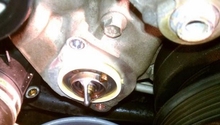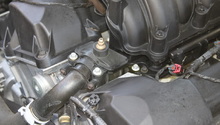Dodge Ram 1994-2008: Why is My Truck Overheating?
Are you noticing white smoke billowing atop your hood? Maybe you thought you were just driving through fog. You can't second guess it when the truck finally shuts off. You've got a problem and this article will help you resolve it.
This article applies to the Dodge Ram 2nd and 3rd Generation (1994-2008).
Your vehicle's cooling system comprises of various hoses, a belt, a thermostat, a pressurized radiator cap, among other components. If any of these components are faulty or deteriorated, the system can have "air trapped" within it that prohibits coolant flow, which can cause the motor to not cool properly. When this happens, the thermostat doesn't get the reading to inform the on-board ECU that everything is alright and will flash the indicator that the vehicle is overheating. As such, you may also notice the temperature needle rise steadily beyond the point of optimal running temperatures.

Materials Needed
- Flat tip screwdriver
- Drain Pan
- Compression tester tool
- Ratchet set with various sockets
Step 1 – Inspect cooling system
There are parts of the cooling system that can deteriorate over time and cause cooling issues. Often, inspecting these components can save the owner a lot of money and frustration.
- With the car off, observe the hoses leading to and from the radiator.
- Squeeze the upper as well as lower radiator hoses and observe for spewing coolant or listen for escaping air.
- Remove the radiator cap and inspect the seal.
- With the car running, inspect the bottom of the end tanks of your radiator for leaks.
- Inspect the thermostat housing for cracks and leaks.

Pro Tip
Carefully determine if the radiator is even getting hot. It is possible that the radiator hoses are blocked.
If the components visually show no signs of wear or damage, proceed to Step 2.
Step 2 – Isolate thermostat
If the thermostat in the system is not opening and closing the way it should when the motor reaches temperature, it could be blocking coolant flow from circulation. A related symptom would be a "cold" radiator when the motor has been running for a while.
- Remove the upper radiator hose and leave it loose.
- Start the motor and observe if the coolant comes out from the upper hose.
- Pour distilled water into coolant reservoir until you can determine if coolant is flowing or not.
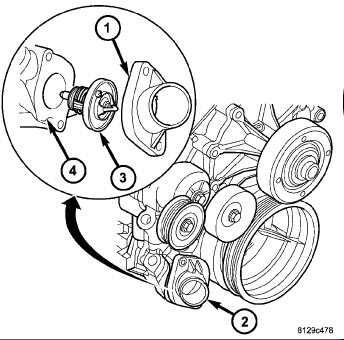
Pro Tip
All or some of your coolant will be lost in this procedure, so keep a drain pan and rags handy. As an alternative, if you do remove the thermostat, you can place it in boiling hot water to observe whether it "opens" or not.
If the thermostat opens as normal, proceed to Step 3.
Step 3 – "Burp" the coolant system
At this point, if the car is still overheating, there may be air trapped in the system.
- With the engine cool, drain the coolant into a clean pan.
- Add 50/50 coolant mix to the radiator and leave the cap off.
- Add 50/50 coolant mix to the coolant reservoir.
- Start the motor to observe for leaks and whether the gauge rises past optimal running temperature.

If the system will not burp, proceed to Step 4.
Pro Tip
You can aid the "burping" process by squeezing the upper radiator hose. You may also notice an air bubble rise to the top opening on the radiator.
Step 4 – Replace water pump
If air is not expelling from the system, it is quite possible the impellers on the water pump are damaged or defective, and not allowing the pump to push coolant thoroughly under operating temperatures.
- Remove the fan.
- Remove bolts from the radiator housing.
- Remove the single 10mm bolt holding reservoir in place.
- Loosen the tensioner.
- Loosen the idler pulley.
- Remove the hose clamps and hose.
- Remove bolts holding the water pump in.
- Remove bolts on the water pump.
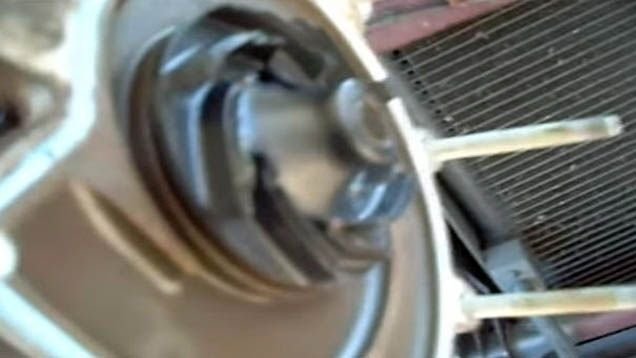
Figure 4. The impeller or teeth of the water pump has worn out. 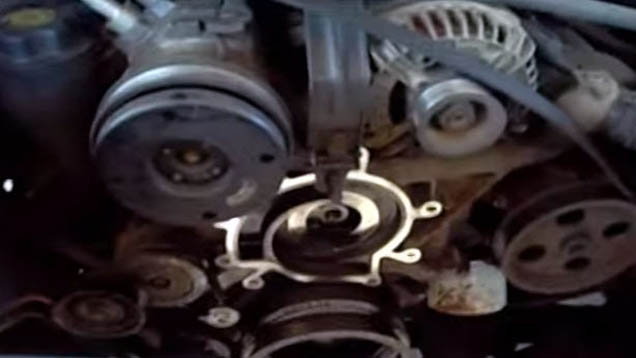
Figure 5. Water pump housing.
Pro Tip
Some of the bolts are varying lengths that hold the water pump in place. Keep note of which hole accepts which bolt.
Featured Video: How to Install Water Pump
(Related Article: Dodge Ram 2002-2008: How to Replace Water Pump - DodgeForum.com)
Related Discussions
- Diagnosing Overheating Problems - DodgeForum.com
- Overheating Problem - DodgeForum.com
- How to "Burp" Your Coolant System - DodgeForum.com
- Overheating Thermostat - DodgeForum.com
- No Cabin Heat, Engine Overheating - DodgeForum.com


